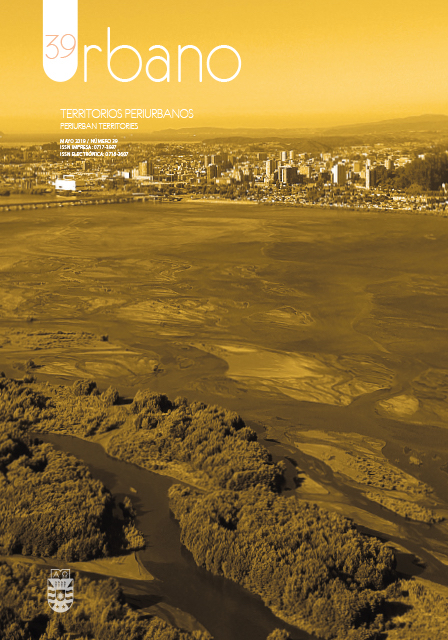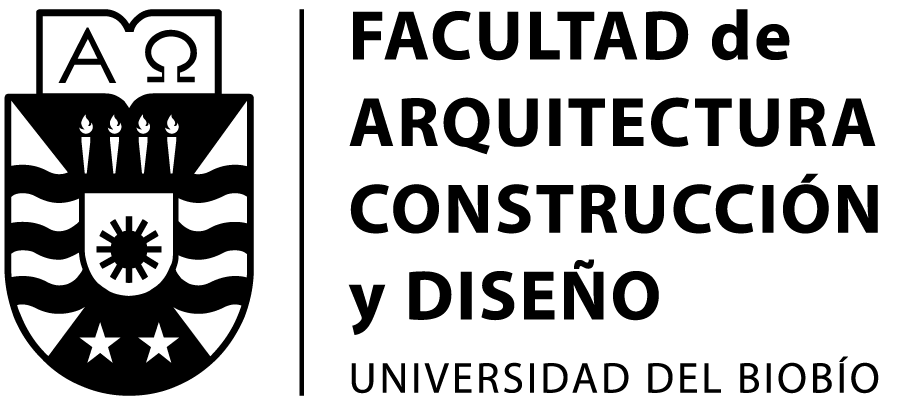Challenges for wildfire-prone urban-rural interfaces: The case of Melbourne
DOI:
https://doi.org/10.22320/07183607.2019.22.39.05Keywords:
wildfire, disaster risk, spatial planning, peri-urbanAbstract
Wildfires are an ever-increasing threat for many residents of urban-rural interfaces located in wildfire-prone areas. Spatial planning is an important aspect of contending with wildfire risk, as it has the potential to modify the design, location and characteristics of settlements. However, planning systems can struggle to integrate actions to this end. Using a case-study methodology, this paper reflects on treatment responses to key wildfire risk factors in urban-rural interfaces and the challenges associated with this task. It analyses the case of Melbourne from the perspective of the spatial planning mechanisms addressing wildfire risk that are related to physical structures and the roles of agencies. The physical risk treatment responses are examined considering mapping, strategic actions and decision-making processes. Finally, the following challenges faced by spatial planning mechanisms when addressing wildfire risk are also highlighted: the direct and indirect influence of politics, other planning demands that compete with and slow risk management, implementation limitations, and problems associated with the legacy of risk in existing settlements.
Downloads
References
AS3959. Construction of Buildings in Bush Fire Prone Areas. Standards Australia, Sydney, Australia, 2009.
ATKINSON, Dale; CHLADIL, Mark; JANSSEN, Volker and LUCIEER, Arko. Implementation of quantitative bushfire risk analysis in a GIS environment. International Journal of Wildland Fire, 2010, vol. 19, n° 5, pp. 649-658.
AUSTRALIAN BUREAU OF STATISTICS. 2016 Census QuickStats - Greater Melbourne. Victoria, Australia, 2016.
BALCH, Jennifer K.; BRADLEY, Bethany A.; ABATZOGLOU, John T., R.; NAGY, Chelsea et al. Human-started wildfires expand the fire niche across the United States. Proceedings of the National Academy of Sciences, 2017, vol. 114, n° 11, pp. 2946-2951.
BOND, Tessa y MERCER, David. Subdivision Policy and Planning for Bushfire Defence: A Natural Hazard Mitigation Strategy for Residential Peri‐Urban Regions in Victoria, Australia. Geographical Research, 2014, vol. 52, n°1, pp. 6-22.
BROWNE, Emily y MINNERY, John. Bushfires and land use planning in peri-urban South East Queensland. Australian Planner, 2015, vol. 52, n° 3, pp. 219-228.
BRYANT, Colleen. Deliberately lit vegetation fires in Australia. Trends & Issues in Crime & Criminal Justice, 2008, (350), 1-6.
BURBY, Raymond J. Natural Hazards and Land Use: An Introduction. En: BURBY, Raymond J. (ed.). Cooperating with Nature. Washington D.C.: Joseph Henry Press, 1998, pp. 1-28.
BUTT, Andrew; BUXTON, Michael; HAYNES, Rachel y LECHNER, Alex. Peri-urban growth, planning and bushfire in the Melbourne city-region. Proceedings of the State of Australian Cities (SOAC 2009). Canning Bridge WA, Australia, Promaco Conventions, 2009, pp.1-14.
BUTT, Andrew y FISH, Bill. Amenity, Landscape and Forms of Peri-Urbanization around Melbourne, Australia. En: KENNEDY, Melissa; BUTT, Andrew y AMATI, Marco (eds.), Conflict and change in Australia's peri-urban landscapes. London, [England]; New York: Routledge, 2016, pp. 7-27.
BUXTON, Michael; ALVAREZ, Amaya; BUTT, Andrew; FARRELL, Stephen et al. Planning sustainable futures for Melbourne's peri-urban region, October 2008. Melbourne: RMIT University, 2008.
BUXTON, Michael; HAYNES, Rachel; MERCER, David y BUTT, Andrew. Vulnerability to Bushfire Risk at Melbourne's Urban Fringe: The Failure of Regulatory Land Use Planning. Geographical Research, 2011, vol. 49, n°1, pp. 1-12.
COUNTRY FIRE AUTHORITY (CFA). Planning for bushfire Victoria, Guidelines for meeting Victoria's planning requirements: November 2012. Victoria, Australia: CFA, 2012.
COUNTRY FIRE AUTHORITY (CFA). About Black Saturday [en línea], 2019. [Consultado 13 abril 2019]. Disponible en: http://www.cfa.vic.gov.au/about/black-saturday/
CORNISH, Derek y CLARKE, Ronald. Opportunities, precipitators and criminal decisions: A reply to Wortley's critique of situational crime prevention. Crime prevention studies, 2003, n° 16, 41-96.
DEPARTMENT of Environment, Land, Water and Planning (DELWP). Planning for bushfire bushfire mapping update – Planning system, Information for planners: July 2016. Victoria, Australia: DELWP, 2016.
DEPARTMENT of Environment, Land, Water and Planning (DELWP). Plan Melbourne, a global city of opportunity and choice: 2017. Victoria, Australia: DEWLP 2017.
DEPARTMENT of Environment, Land, Water and Planning (DELWP). Victoria Planning Provisions. In. Victoria, Australia: State Government Victoria, 2018.
FAIVRE, Nicolas; JIN, Yufang; GOULDEN, Michael L. y RANDERSON, James T. Controls on the spatial pattern of wildfire ignitions in Southern California. International Journal of Wildland Fire, 2014, vol. 23, n° 6, pp. 799-811.
GALIANA-MARTÍN, Luis. Spatial Planning Experiences for Vulnerability Reduction in the Wildland-Urban Interface in Mediterranean European Countries. European Countryside, 2017, vol. 9, p. 577.
GALIANA-MARTÍN, Luis; HERRERO, Gema y SOLANA, Jesús. A Wildland–Urban Interface Typology for Forest Fire Risk Management in Mediterranean Areas. Landscape Research, 2011, vol. 36, n° 2, pp. 151-171.
GALIANA, Luis; AGUILAR, Susana y LÁZARO, Andrea. An assessment of the effects of forest-related policies upon wildland fires in the European Union: Applying the subsidiarity principle. Forest Policy and Economics, 2013, vol. 29, pp. 36-44.
GANNON, Theresa A. Explanations of firesetting: typologies and theories. En: DOLEY, Rebekah; DICKENS, Geoffrey y GANNON, Theresa (eds). The Psychology of Arson: A Practical Guide to Understanding and Managing Deliberate Firesetters. Psychology Press and Routledge Academic, 2015, pp. 13-27.
GLOBAL FACILITY FOR DISASTER REDUCTION AND RECOVERY (GFDRR). Investing in urban resilience, Protecting and promoting development in a changing world: 2016. Washington DC. GFDRR: 2016.
GILL, Malcolm y STEPHENS, Scott. Scientific and social challenges for the management of fire-prone wildland–urban interfaces. Environmental Research Letters, 2009, vol. 4, n° 3, pp. 1-10.
GONZALEZ-MATHIESEN, Constanza y MARCH, Alan. Establishing Design Principles for Wildfire Resilient Urban Planning. Planning Practice & Research, 2018, vol. 33, n° 2, pp. 1-23.
GROENHART, Lucy; MARCH, Alan y HOLLAND, Mark. Shifting Victoria's emphasis in land-use planning for bushfire: towards a place-based approach. Australian Journal of Emergency Management, The, 2012, vol. 27, n° 4, p. 33.
HAIGH, Richard y AMARATUNGA, Dilanthi. An integrative review of the built environment discipline's role in the development of society's resilience to disasters. International journal of disaster resilience in the built environment, 2010, vol. 1, n° 1, pp. 11-24.
HOLLAND, Mark; MARCH, Alan; YU, Jun y JENKINS, Adam. Land Use Planning and Bushfire Risk: CFA Referrals and the February 2009 Victorian Fire Area. Urban Policy & Research, 2013, vol. 31, n° 1, pp. 41-54.
KENNEDY, Melissa; BUTT, Andrew y AMATI, Marco (eds). Conflict and change in Australia's peri-urban landscapes London, [England] ; New York: Routledge, 2016.
KING, Davi; GURTNER, Yetta; FIRDAUS, Agung; HARWOOD, Sharon et al. Land use planning for disaster risk reduction and climate change adaptation: Operationalizing policy and legislation at local levels. International journal of disaster resilience in the built environment, 2016, vol. 7, n° 2, pp. 158-172.
LAMBIE, Ian; IOANE, Julia y RANDELL, Isabel. Understanding child and adolescent firesetting. En: DOLEY, Rebekah; DICKENS Geoffrey y GANNON, Theresa (eds). The Psychology of Arson: A Practical Guide to Understanding and Managing Deliberate Firesetters. Routledge, 2015, pp. 28-40.
MARCH, Alan. Integrated Planning to Reduce Disaster Risks: Australian Challenges and Prospects. Built Environment, 2016, vol. 42, n° 1, pp. 158-173.
MARCH, Alan y RIJAL, Yogita. Interdisciplinary action in urban planning and building for bushfire: The Victorian case. Australian Journal of Emergency Management, The, 2015, vol. 30, n° 4, p. 11.
MARTÍNEZ, Jesús; VEGA-GARCÍA, Cristina y CHUVIECO, Emilio. Human-caused wildfire risk rating for prevention planning in Spain. Journal of Environmental Management, 2009, vol. 90, n° 2, pp. 1241-1252.
MCENTIRE, David A. Triggering agents, vulnerabilities and disaster reduction: towards a holistic paradigm. Disaster Prevention and Management: An International Journal, 2001, vol. 10, n° 3, pp. 189-196.
MILETI, Dennis S. Disasters by design: a reassessment of natural hazards in the United States. Edtion ed.: Washington, D.C. : Joseph Henry Press, 1999.
MORITZ, Max A.; SYPHARD, Alexandra D.; BATLLORI, Enric; BRADSTOCK, Ross A. et al. Learning to coexist with wildfire. Nature, 2014, vol. 515, n° 7525, pp. 58-66.
NATIONAL EMERGENCY RISK ASSESSMENT GUIDELINES (NERAG). National Emergency Risk Assessment Guidelines 2015.
NSW RURAL FIRE SERVICE. Planning for bush fire protection. Melbourne, Australia: Australian Institute for Disaster Resilience, 2006.
PAPALIA, Nina; OGLOFF, James R. P.; CUTAJAR, Margaret y MULLEN, Paul E. Child Sexual Abuse and Criminal Offending: Gender-Specific Effects and the Role of Abuse Characteristics and Other Adverse Outcomes. Child Maltreatment, 2018, vol. 23, n° 4, pp. 399-416.
RAMSAY, Caird y RUDOLPH, Lisle. Landscape and Building Design for Bushfire Areas. Edtion ed. Melbourne: CSIRO Publishing, 2003.
STANLEY, Janet y READ, Paul. Current and future directions for the place of community in the prevention of bushfire arson. En: DOLEY, Rebekah; DICKENS Geoffrey y GANNON, Theresa (eds). The Psychology of Arson: A Practical Guide to Understanding and Managing Deliberate Firesetters. Routledge, 2015, pp. 147-163.
STEFFEN, Will; STOCK, Andrew; ALEXANDER, David y RICE, Martin. Angry summer 2016/17: Climate change super-charging extreme weather, 2017.
SYPHARD, Alexandra D.; BRENNAN, Teresa J. y KEELEY, Jon E. The importance of building construction materials relative to other factors affecting structure survival during wildfire. International Journal of Disaster Risk Reduction, 2017, vol. 21, pp. 140-147.
SYPHARD, Alexandra D.; KEELEY, Jon E.; BAR MASSADA, Avi; BRENNAN,Teresa J. et al. Housing arrangement and location determine the likelihood of housing loss due to wildfire. PloS one, 2012, vol. 7, n° 3, e33954.
TEAGUE, Bernard; MCLEOD, Ronald y PASCOE, Susan. Final report summary, 2010.
TOMAN, Eric; STIDHAM, Melanie; MCCAFFREY, Sarah y SHINDLER, Bruce. Social science at the wildland-urban interface: A compendium of research results to create fire-adapted communities. Gen. Tech. Rep. NRS-111. Newtown Square, PA: US Department of Agriculture, Forest Service, Northern Research Station, 2013, vol. 111, pp. 1-75, 2013.
TROY, Austin y Roger G. Kennedy. Introduction: Finding solutions to the urban-wildland fire problem in a changing world. En: TROY, Austin and Roger G. Kennedy eds. Living on the edge: economic, institutional and management perspectives on wildfire hazard in the urban interface. Oxford: Elsevier JAI, 2007, vol. Advances in the economics of environmental resources, pp. 1-14.
UNITED Nations International Strategy for Disaster Reduction (UNISDR). Hyogo Framework for Action. Geneva, Switzerland: United Nations, 2005.
UNITED Nations International Strategy for Disaster Reduction (UNISDR). Sendai Framework for Disaster Risk Reduction. Geneva, Switzerland: United Nations, 2015.
VICTORIAN PLANNING AUTHORITY. What is the housing density? [en línea]. [Consultado 13 marzo 2019]. Disponible en: https://vpa.vic.gov.au/faq/minta-farm-what-is-the-housing-density/
Published
How to Cite
Issue
Section
License
The content of articles which are published in each edition of Habitat Sustentable, is the exclusive responsibility of the author(s) and does not necessarily represent the thinking or compromise the opinion of University of the Bio-Bio.
The author(s) conserve their copyright and guarantee to the journal, the right of first publication of their work. This will simultaneously be subject to the Creative Commons Recognition License CC BY-SA, which allows others to share-copy, transform or create new materials from this work for non-commercial purposes, as long as they recognize authorship and the first publication in this journal, and its new creations are under a license with the same terms.![]()























